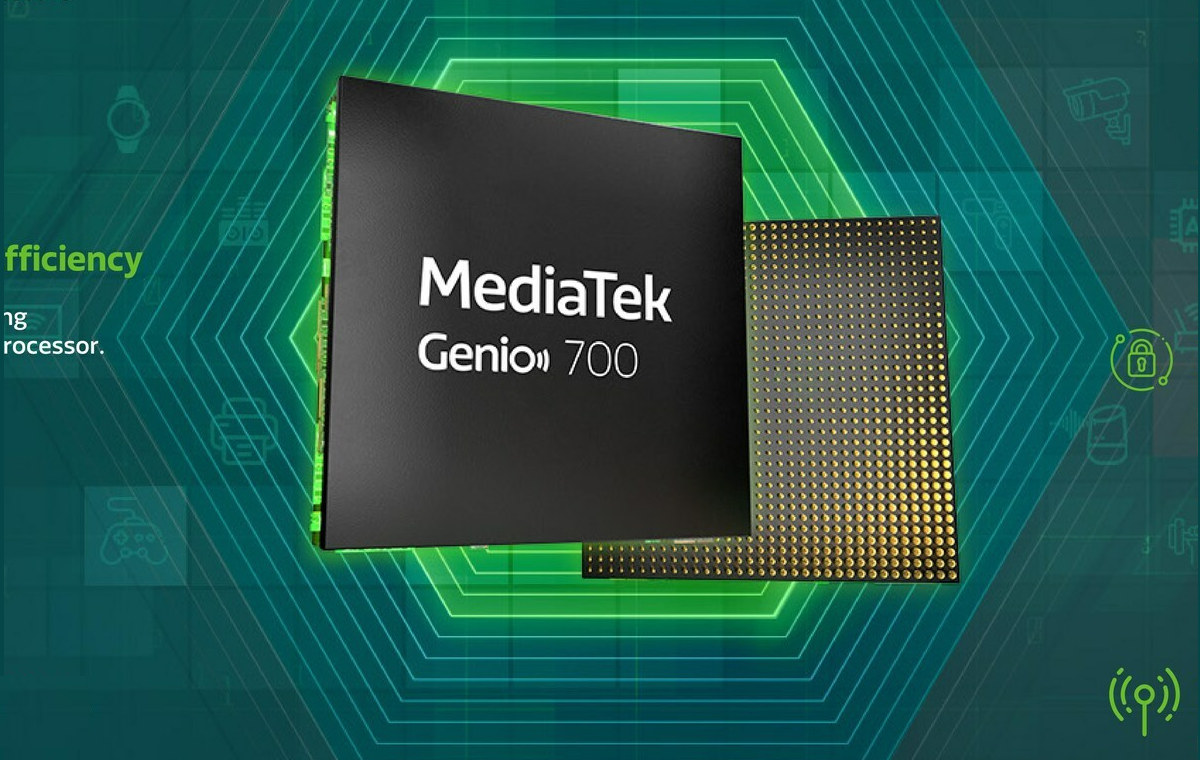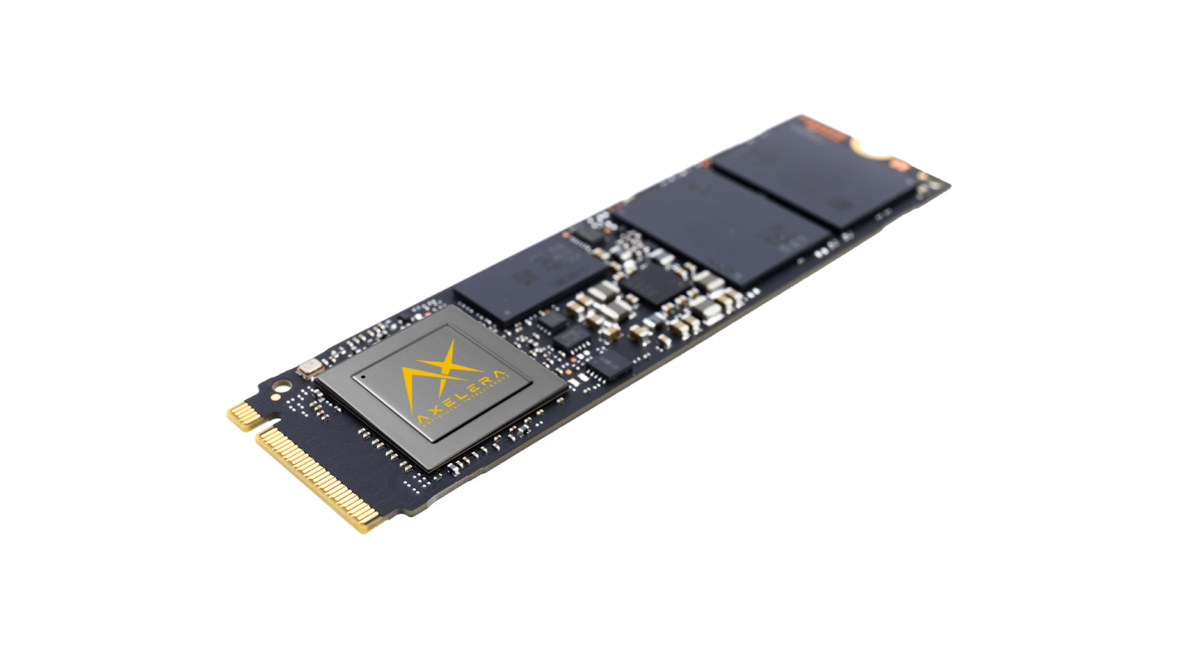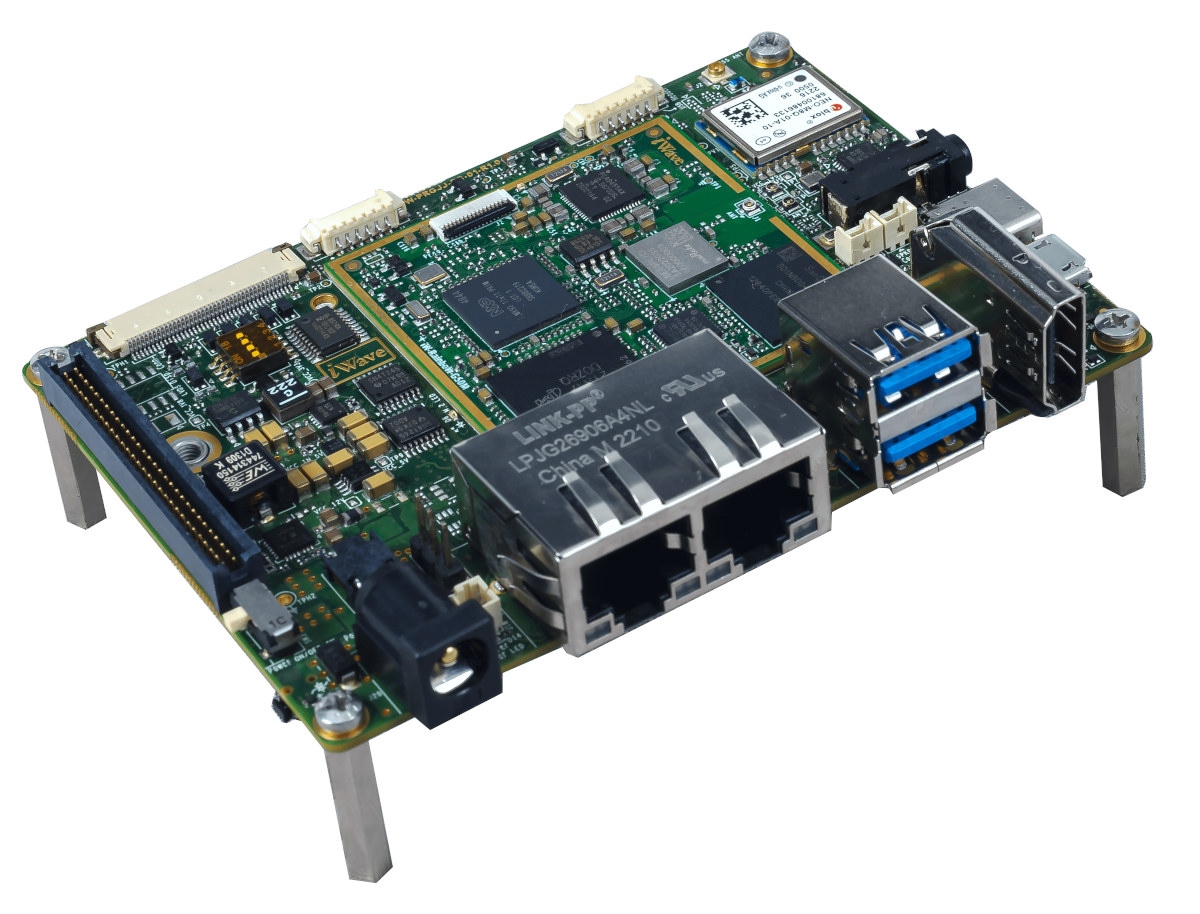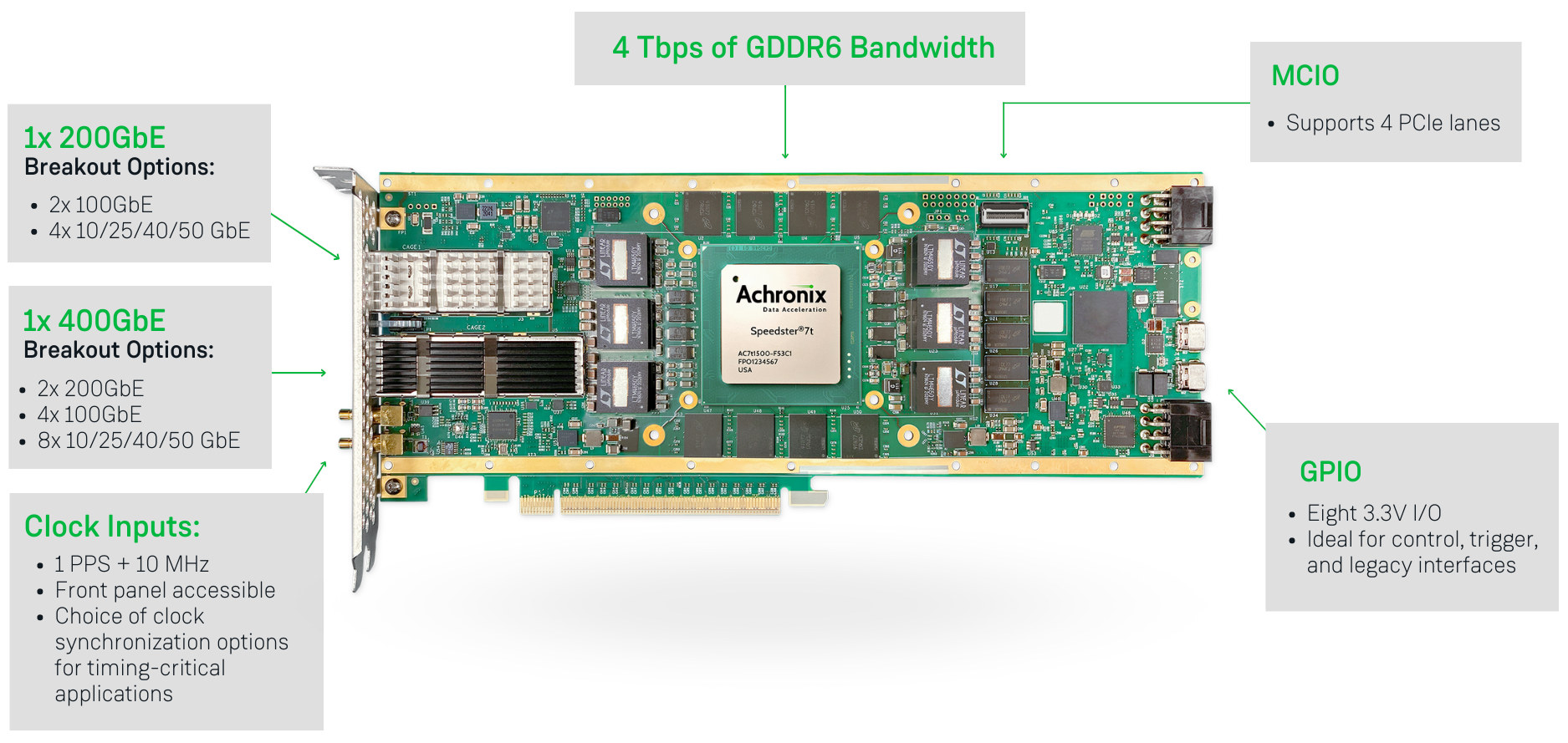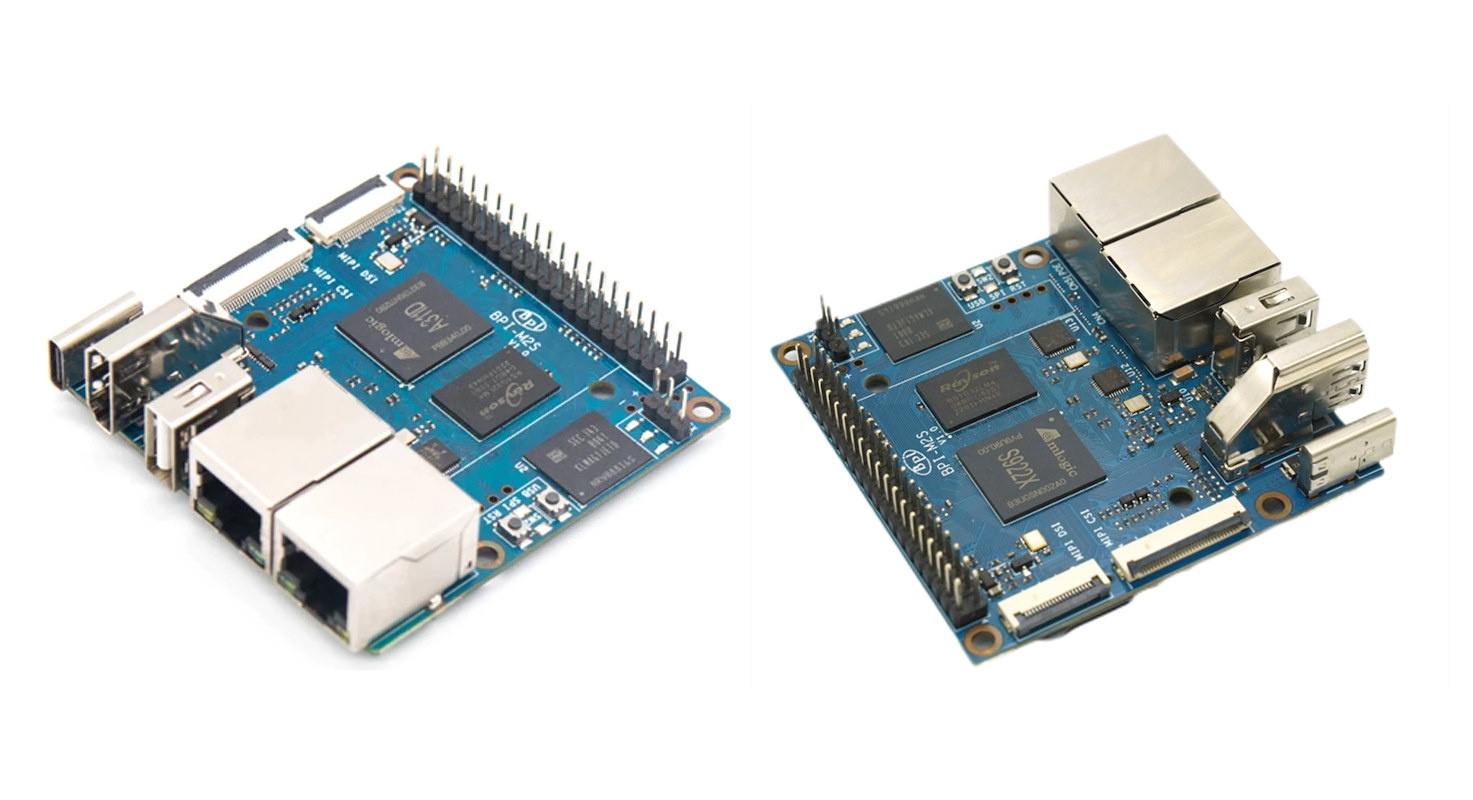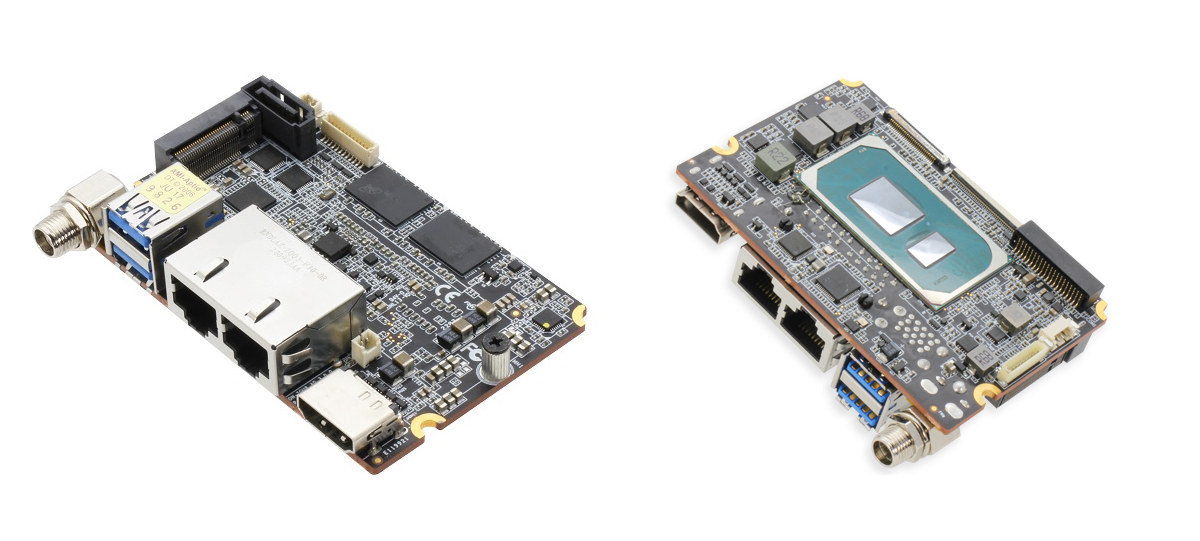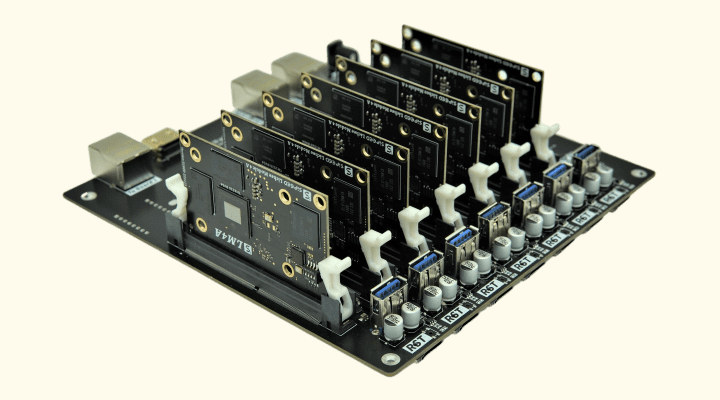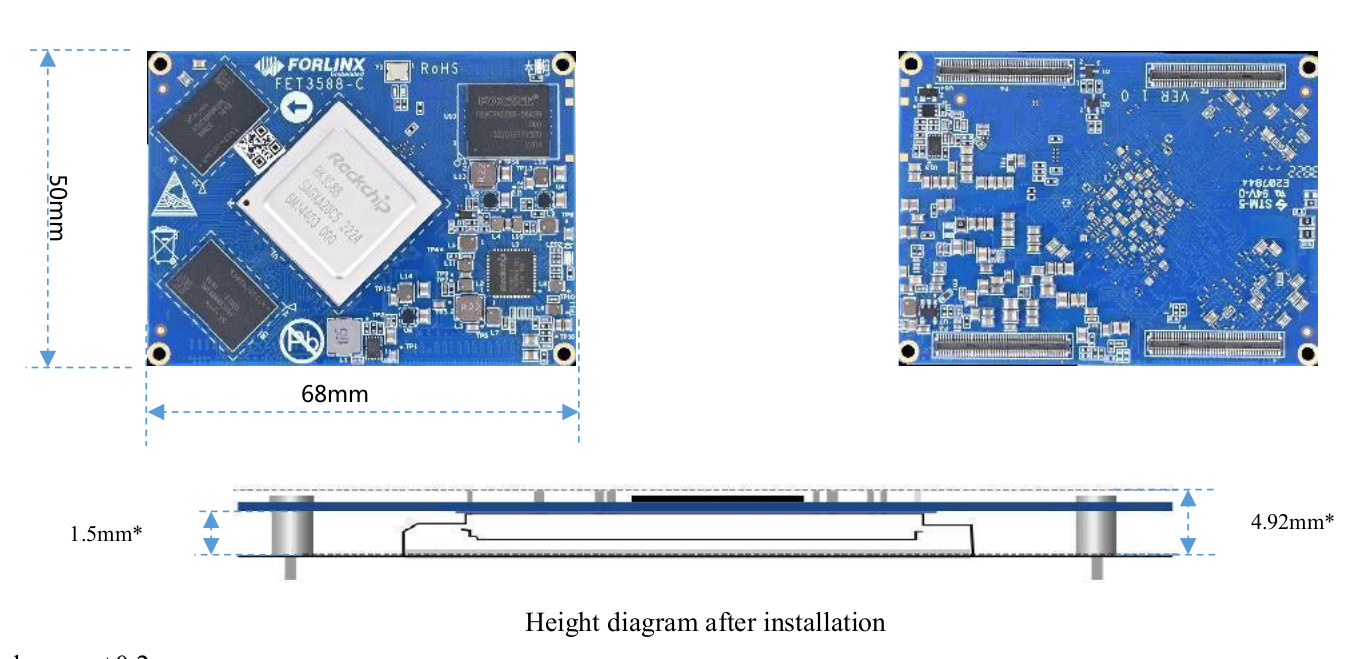MediaTek Genio 700 is an octa-core Arm processor with two Cortex-A78 cores, six Cortex-A55 cores, a Mali-G57 GPU, and a 4 TOPS AI accelerator designed for consumer and industrial IoT applications. The new processor is a cost-down version of the Genio 1200 premium AIoT processor introduced last year with four Cortex-A78 and four Cortex-A55 cores. The Genio 700 offers many of the same features but with lower performance/capabilities, including a 3-core GPU and an AI accelerator limited to 4.0 TOPS, as well as support for dual displays up to 4K + Full HD (instead of 2x 4K), and 32MP single cameras (instead of 48 MP). MediaTek Genio 700 specifications: CPU – Octa-core processor with 2x Cortex-A78 cores @ up to 2.2 GHz, 6x Cortex-A55 cores @ up to 2.0 GHz GPU – Arm Mali-G57 MC3 GPU VPU Encoding up to 4Kp60 with H.265/HEVC Decoding up to 4Kp75, AV1, VP9, HEVC, […]
$150 Axelera M.2 AI accelerator module claims to deliver up to 214 TOPS
Axelera M.2 AI accelerator module is said to deliver up to 214 TOPS of AI inference and up to 3200 FPS with ResNet -50 in a compact M.2 2280 form factor. Few details are available at this time, but the module is based on the company’s Metis AIPU (AI Processing Unit) using in-memory computing based on arrays of SRAM memory devices used to “store a matrix and perform matrix-vector multiplications “in-place” without intermediate movement of data”. This technology is said to “radically” increase the number of operations per computer cycle with without suffering from issues such as noise or lower accuracy. The Metis AI platform delivers 50+ TOPS per core (RISC-V-controlled dataflow engine), offers FP32 equivalent accuracy, and has a 15 TOPS/W energy efficiency. The last point is impressive, but that means 214 TOPS won’t be reachable with the module shown above, since the M.2 form factor is designed to […]
Pico-ITX SBC features NXP i.MX 93 LGA system-on-module
iWave Sytems iW-RainboW-G50M is an NXP i.MX 93 OSM-L compliant LGA module with up to 2GB RAM, WiFi 5 and Bluetooth 5.2 module that is found in the company’s iW-RainboW-G50S Pico-ITX SBC designed for industrial applications. The NXP i.MX 93 single and dual-core Cortex-A55 processor with an Ethos U65 microNPU was announced in November 2021, but we had yet to see any hardware based on the new NXP i.MX 9 processor family. The iW-RainboW-G50M and iW-RainboW-G50S change that with a system-on-module and single board computer. iW-RainboW-G50M NXP i.MX 93 system-on-module Specifications: SoC (one or the other) NXP i.MX 9352 dual-core Cortex-A55 processor @ up to 1.7 GHz with Arm Cortex-M33 @ 250 MHz, 0.5 TOPS NPU NXP i.MX 9351 single-core Cortex-A55 processor @ up to 1.7 GHz with Arm Cortex-M33 @ 250 MHz, 0.5 TOPS NPU NXP i.MX 9332 dual-core Cortex-A55 processor @ up to 1.7 GHz Arm Cortex-M33 @ […]
Achronix Speedster7t AC7t1500 FPGA is now available for high-bandwidth applications
Achronix Semiconductor has recently announced the general availability of the Speedster7t AC7t1500 FPGA designed for networking, storage, and compute (AI/ML) acceleration applications. The 7nm Speedster7t FPGA family offers PCIe Gen5 ports and GDRR6 and DDR5/DDR4 memory interfaces, delivers up to 400 Gbps on the Ethernet ports, and includes a 2D network on chip (2D NoC) that can handle 20 Tbps of total bandwidth. Achronix Speedster7t highlights: Two-dimensional network on chip (2D NoC) enabling high bandwidth data flow throughout and between the FPGA fabric and hard I/O and memory controllers and interfaces MLP (Machine Learning Processors) blocks with arrays of multipliers, adder trees, accumulators, and support for both fixed and floating-point operations, including direct support for Tensorflow’s bfloat16 format and block floating-point (BFP) format. Multiple PCIe Gen5 ports High-speed SerDes transceivers, supporting 112 Gbps PAM4 and 56 Gbps PAM4/NRZ modulation, as well as lower data rates Hard Ethernet MACs that support […]
$96+ Banana Pi BPI-M2S Amlogic A311D/S922X SBC offers dual GbE, optional PoE and WiFi 5
The Banana Pi PPI-M2S is a single board computer (SBC) powered by either Amlogic A311D or S922X processor with 4GB RAM, 16GB eMMC flash, HDMI 2.1 and MIPI DSI display interfaces, one MIPI CSI camera connector, two Gigabit Ethernet ports with one PoE capable, as well as optional WiFi 5 & Bluetooth support. When we first covered the Banana Pi BPI-M2S over a year ago, all we had were some 3D renders of the board and some preliminary specifications. The company has now manufactured the board, provided some documentation, and started to take orders for the board on Aliexpress for $95.79 or $100 depending on whether Amlogic S922X or A311D is selected. Banana Pi BPI-M2S specifications: SoC – Amlogic A311D or S922X hexa-core processor with 4x Arm Cortex-A73 cores @ 2.21 GHz, 2x Arm Cortex-A53 cores @ 1.8 GHz, Arm Mali-G52 MP4 (6EE) GPU with OpenGL ES 3.2, Vulkan 1.0 […]
Business card-sized SBC ships with Intel Core Tiger Lake or AMD Ryzen V2000 processor
We’ve recently reviewed the UP 4000 SBC as a more powerful x86 alternative to Raspberry Pi 4, but if it still does not cut it, AAEON de next-TGU8 or de next-V2K8 should, as the business card-sized single board computers (SBC) are equipped with respectively an Intel Tiger Lake processor up to a Core i7-1185G7E, and an AMD Ryzen Embedded V2000 SoC up to Ryzen Embedded V2516. But the comparison stops at the size, as both SBCs offer sets of features different from the usual Raspberry Pi form factor with notably up to 16GB RAM, SATA and NVMe storage, dual Ethernet (1x 2.5GbE, 1x Gigabit Ethernet), dual 4K display output via HDMI and eDP, some USB 3.2 ports, as well as serial and I/O interfaces via headers. de next-TGU8/V2K8 SBC specifications: SoC de next-TGU8 Intel Core i7-1185G7E quad-core/octa-thread processor @ 1.80GHz / 4.40GHz with Intel UHD graphics; TDP: 15W (TPD up: […]
Sipeed LM4A – T-Head TH1520 RISC-V module to power Raspberry Pi 4 competitor and cluster board
Sipeed LM4A is a quad-core RISC-V system-on-module based on the T-Head TH1520 SoC found in the ROMA laptop and destinated to be found in a Raspberry Pi SBC competitor as well as a cluster board. The LM4A, which stands for Lichee Module 4 Model A, comes with 4GB to 16GB RAM, and up to 64GB flash, and connects to the carrier board through a 260-pin SO-DIMM connector. The TH1520 is one of the rare RISC-V SoCs with a 3D GPU, and the SBC based on LM4A has been shown to outperform the Raspberry Pi 4 in benchmarks as we’ll see below. Sipeed LM4A specifications: SoC – Alibaba T-Head TH1520 quad-core RISC-V Xuantie C910 (RV64GCV) processor @ 2.5 GHz, Xuantie C906 audio DSP @ 800 MHz, low power Xuantie E902 core, 50 GFLOPS Imagination 3D GPU, and 4 TOPS NPU System Memory – 4GB, 8GB, or 16GB RAM Storage – Optional […]
Rockchip RK3588 system-on-module exposes 400 pins through high-density connectors
Forlinx FET3588-C is a relatively compact Rockchip RK3588 system-on-module measuring 68x50mm and exposing many of the processor’s I/Os through four 100-pin high-density connectors. The module ships with up to 8GB LPDDR4x and 64GB eMMC flash, and the company also provides the OK3588-C development board for evaluation with HDMI output and input, two MIPI DSI interfaces, five camera connectors, dual Gigabit Ethernet, M.2 sockets for WiFi and 4G/5G cellular connectivity, and more. Forlinx FET3588-C RK3588 system-on-module Specifications: SoC – Rockchip RK3588 octa-core processor with 4x Arm Cortex-A76 cores @ up to 2.4 GHz, 4x Arm Cortex-A55 cores, Arm Mali-G610 MP4 GPU with support for OpenGL ES3.2, OpenCL 2.2, Vulkan1.1, 6 TOPS NPU, 48MP ISP, 8Kp60 video decoding, 8Kp30 video encoding System Memory – 4GB or 8GB LPDDR4x (16GB planned) Storage – 32GB or 64GB eMMC 5.1 flash (128GB planned) Carrier board interface – 4x high-density 100-pin board-to-board connectors Storage – Up […]


